 For my 2013 book on the Saltonstall family, I wrote 23 biographical essays on family members, from GilbertB Saltonstall (grandfather of the American immigrant) to Benjamin Crowninshield Bradlee, the legendary Washington Post editor. The Saltonstalls have produced a number of prominent and important public figures, including Sir Richard1 Saltonstall, who brought the family to Massachusetts Bay; Gurdon4 Saltonstall, the New London minister who became Governor of Connecticut; Congressman Leverett7 Saltonstall; and long-time Governor and Senator Leverett10 Saltonstall of Massachusetts. Still, there is no question that Ben Bradlee was the most fun subject about whom to write: he managed to pack several lifetimes’ worth of adventure into just one, spanning 93 years. His death in October drew a line under an era. Continue reading A “Good Life,” indeed
For my 2013 book on the Saltonstall family, I wrote 23 biographical essays on family members, from GilbertB Saltonstall (grandfather of the American immigrant) to Benjamin Crowninshield Bradlee, the legendary Washington Post editor. The Saltonstalls have produced a number of prominent and important public figures, including Sir Richard1 Saltonstall, who brought the family to Massachusetts Bay; Gurdon4 Saltonstall, the New London minister who became Governor of Connecticut; Congressman Leverett7 Saltonstall; and long-time Governor and Senator Leverett10 Saltonstall of Massachusetts. Still, there is no question that Ben Bradlee was the most fun subject about whom to write: he managed to pack several lifetimes’ worth of adventure into just one, spanning 93 years. His death in October drew a line under an era. Continue reading A “Good Life,” indeed
Tag Archives: A Genealogist’s Diary
Cinema royalty
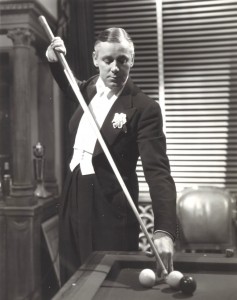
I am currently helping to research the ancestry of Dame Angela Lansbury for an event NEHGS will hold in November, and part of my work is focused on the theatrical tradition in the family of Miss Lansbury’s mother, Moyna Macgill (1895–1975). Miss Macgill’s career spanned the almost fifty years between 1918 and 1965, but it’s worth noting that at least one of her great-uncles and several of her father’s first cousins preceded her on the London and New York stage, while two of Miss Macgill’s brothers, all four of her children, and assorted descendants and in-laws (including Sir Peter Ustinov and Ally Sheedy) continued in the field.
As I’ve mentioned in some of my blog posts, one of my research interests is old photographs, whether of my own family or as part of an aesthetic appreciation of the form. Continue reading Cinema royalty
Grants for New England historians
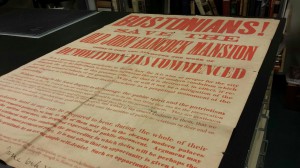
I will be out of the office today, attending a planning meeting for the New England Regional Fellowship Consortium (NERFC) at the John Hay Library in Providence. The New England Historic Genealogical Society (NEHGS) is a member of the consortium, a group made up of New England state and local historical societies, university and college libraries (Harvard, Smith, Trinity, and Brown), and museums (Historic Deerfield and Mystic Seaport). What links the membership together, for the purpose of providing $5,000 research fellowships, is a shared interest in making their large collections available for use by historical researchers. Continue reading Grants for New England historians
Courtesy titles: a primer

Given that the British peerage system developed over time, its labyrinthine rules and unfamiliar nomenclature are not all that surprising. As feudal peerages – a somewhat amorphous class bound by land tenure and military service – gave way to peerages granted by the monarch, the rules governing titles and their inheritance evolved into what we have today.
Several readers of my previous post on the subject were perplexed by courtesy titles. The peerage system in the United Kingdom affords peerage holders and their immediate relatives a variety of titles signifying rank, some hereditary and bound to one holder at a time, others “by courtesy” and held by some or all members of a particular generation. Continue reading Courtesy titles: a primer
Two hundred posts on Vita Brevis
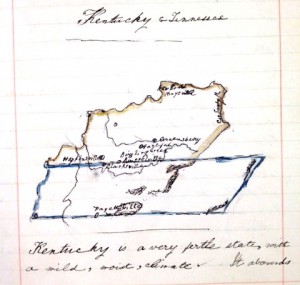
This post marks the two-hundredth entry on Vita Brevis since its début on January 10. After ten months and more than 250,000 page views, and with contributions from 52 bloggers (and counting), the blog has established itself as a place to stop in and see how other genealogists work. Not every post is germane to every reader’s interests, but in the main the spirit of inquiry animates each entry, offering guidance about what approaches and resources help us in our research. Continue reading Two hundred posts on Vita Brevis
Title troubles

The recent death of the Dowager Duchess of Devonshire got me to thinking about the genealogical treatment of titles. Titles can be tricky, and many American genealogists – confronted with medieval British or European titles in their ancestry – prefer to ignore them or, conversely, string them all together and hope that the result is acceptable.
The same is true of the American press. At present, The New York Times behaves as though someone with a title doesn’t use it. In the Duchess’s obituary, the headline called her Deborah Cavendish – true enough, but Cavendish is hardly the name (or the rank) by which she was best known. Continue reading Title troubles
The Boucher family reunion
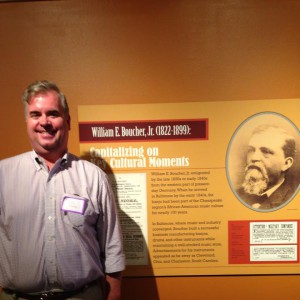 This past weekend, about twenty-five of my Boucher cousins gathered to tour the Baltimore Museum of Industry’s show, “Making Music: The Banjo in Baltimore and Beyond,” with its three curators. Our visit to the BMI likely marked the first large-scale reunion of the descendants of William Boucher Jr. (1822–1899) in many years – perhaps since the death of my great-great-grandmother (William’s widow) in 1923.
This past weekend, about twenty-five of my Boucher cousins gathered to tour the Baltimore Museum of Industry’s show, “Making Music: The Banjo in Baltimore and Beyond,” with its three curators. Our visit to the BMI likely marked the first large-scale reunion of the descendants of William Boucher Jr. (1822–1899) in many years – perhaps since the death of my great-great-grandmother (William’s widow) in 1923.
I don’t think my mother – William Boucher’s great-granddaughter – felt especially close to this part of her family. What interest in the Bouchers I heard expressed focused on exactly how we descended from François Boucher, the painter. When my mother was little, it was still permissible to say, vaguely, that we were François’ descendants; nowadays, with so many (once buried) resources available to us, the story doesn’t really stand up to much scrutiny. Continue reading The Boucher family reunion
The Le Roy family register
 Here at NEHGS, we are always on the lookout for interesting genealogical books, pedigrees, or other formats for documenting family history. One of my first blog posts here covered the Society’s acquisition of a fascinating (and literal) family tree showing all of Queen Victoria’s descendants at the time of her Diamond Jubilee in 1897. Recently, I was directed to – and subsequently acquired – a Le Roy family register compiled by my cousin Edward Augustus Le Roy (1833–1913), one that showed all the descendants of the Le Roy immigrant down to about 1890. Continue reading The Le Roy family register
Here at NEHGS, we are always on the lookout for interesting genealogical books, pedigrees, or other formats for documenting family history. One of my first blog posts here covered the Society’s acquisition of a fascinating (and literal) family tree showing all of Queen Victoria’s descendants at the time of her Diamond Jubilee in 1897. Recently, I was directed to – and subsequently acquired – a Le Roy family register compiled by my cousin Edward Augustus Le Roy (1833–1913), one that showed all the descendants of the Le Roy immigrant down to about 1890. Continue reading The Le Roy family register
Serendipity in genealogy
 There is much serendipity in genealogy: more than once I have pulled a book off the shelf in the library at NEHGS, intrigued by the title or perhaps the binding, only to find within its covers the answer to a vexing research question or a story that sheds light on a forgotten family member. One such volume is H.U. Memoirs, published in Boston in 1886, the earliest Harvard class book – not including the Sibley’s Harvard Graduates volumes – on the Society’s open shelves. In it I found a charming short biography of my great-great-great-great-uncle George James Foster (1810–1876), written by his niece Caroline Healey Dall. Continue reading Serendipity in genealogy
There is much serendipity in genealogy: more than once I have pulled a book off the shelf in the library at NEHGS, intrigued by the title or perhaps the binding, only to find within its covers the answer to a vexing research question or a story that sheds light on a forgotten family member. One such volume is H.U. Memoirs, published in Boston in 1886, the earliest Harvard class book – not including the Sibley’s Harvard Graduates volumes – on the Society’s open shelves. In it I found a charming short biography of my great-great-great-great-uncle George James Foster (1810–1876), written by his niece Caroline Healey Dall. Continue reading Serendipity in genealogy
Genealogical complexities
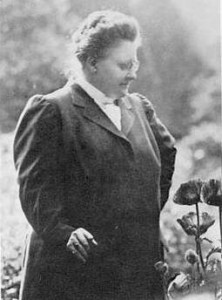
When I started out as a genealogical writer, I followed the model of genealogies published earlier in the twentieth century. The genealogical world they depicted was an orderly one, with generation after generation born in one place, married in another, and buried in a third. The greatest dramas I faced in writing my first book (The Sarsaparilla Kings, published in 1993) concerned cousins who deplored the information I had uncovered on their brief first or second marriages, information they were reluctant to see in print. Continue reading Genealogical complexities